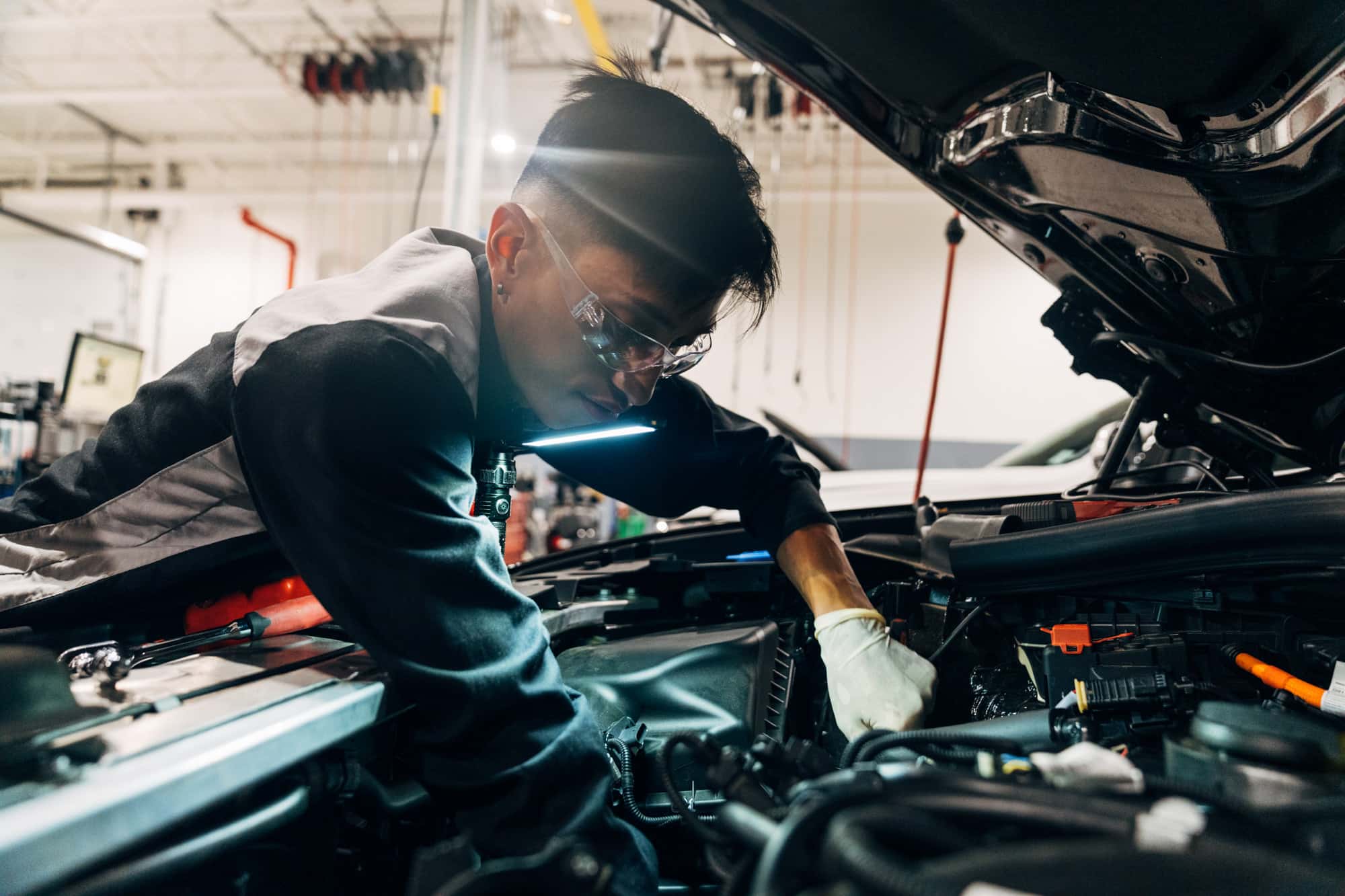Engines are all about one thing: air and fuel. The more air you can get into an engine, the more fuel you can burn and the more power you can produce. That’s where superchargers and turbochargers come in.
These two systems are popular for performance upgrades, but they use very different methods to boost engine power. If you're exploring a career as an automotive technician, understanding the difference between superchargers vs. turbochargers is important!
In Universal Technical Institute’s Automotive Technology program, students have the opportunity to learn about a range of vehicle components, including these performance parts and systems.
Keep reading to learn about how superchargers and turbochargers work, including the differences between them!
What Is a Supercharger?
A supercharger is a device that acts like an air compressor for an engine. Its job is to increase the pressure and density of the air entering the engine’s intake manifold. By forcing more oxygen into the combustion chamber, the engine can burn more fuel and generate more power.
Unlike a turbocharger, a supercharger is mechanically driven by the engine, typically using a belt connected to the crankshaft.
Superchargers: How Do They Work?
Superchargers are directly powered by the engine. As the engine runs, it spins the supercharger, which compresses incoming air and pushes it into the cylinders. This gives the engine a performance boost across a wide RPM range, often with instant throttle response and little to no lag.
This reliable, constant airflow makes superchargers a popular choice for racing and muscle cars.
What Are the Three Types of Superchargers?
Roots
The Roots-type is the oldest supercharger design. It uses large meshing lobes to push air into the engine. While it doesn't compress the air internally, it delivers a large volume of air quickly and provides strong low-end torque.
Twin-screw
Twin-screw superchargers compress air inside the housing using two meshing screws. They're more efficient than Roots models and provide consistent boost across the RPM range.
Centrifugal
Centrifugal superchargers resemble turbochargers in shape and function but are still belt-driven. They provide smoother power delivery, particularly at higher RPMs, and are often used in performance street cars.
What Is a Turbocharger?
A turbocharger is a device that uses exhaust gases to spin a turbine. This turbine drives a compressor that forces more air into the intake. The result? Increased power output without needing to increase engine size or displacement.
Turbochargers are widely used in both performance and fuel-efficient vehicles due to their ability to extract more power without mechanical drag.
Turbochargers: How Do They Work?
Turbochargers consist of two main components: a turbine and a compressor, each attached to opposite ends of a shaft. As exhaust gases exit the engine, they spin the turbine. This action turns the compressor, which draws in and compresses fresh air before sending it into the engine.
This process boosts the engine’s power by increasing the amount of air available for combustion. However, since it relies on exhaust pressure, it may take a moment to build boost, creating what's known as "turbo lag."
Turbochargers vs. Superchargers: 4 Differences
When it comes to boosting engine performance, turbochargers and superchargers are two of the most popular options, but they work in different ways. While both are designed to increase horsepower by forcing more air into the engine, the way they deliver that power can impact everything from fuel efficiency to throttle response. Some of the key differences include:
Power delivery
Superchargers offer immediate power because they’re driven by the engine. Turbochargers need time to spool up, leading to delayed throttle response at lower RPMs. However, turbos can offer significant power gains once fully engaged.
Fuel efficiency
Turbochargers generally improve fuel efficiency by utilizing exhaust gases that would otherwise go to waste. Superchargers, since they draw power directly from the engine, can reduce overall fuel economy.
Sound
Superchargers deliver a signature whine, especially at higher RPMs — a sound many enthusiasts love. Turbochargers produce a whistling or whooshing sound, often followed by the distinctive “blow-off” noise when the throttle is released.
Price
Supercharger systems are typically more expensive due to their mechanical nature and constant operation. Turbochargers can be more affordable, but installation may require additional cooling systems and tuning.
Turbocharge Your Prep for an Automotive Technician Career with UTI1
Understanding the mechanics behind superchargers vs. turbochargers is just one part of learning about modern performance engines and upgrades. At UTI, students enrolled in the Automotive Technology program get trained with engine systems and diagnostic tools used by automotive technicians in the industry through various hands-on courses.18
Ready to get under the hood? See how you can take your passion for engines to the next level and enroll in our program today!
Universal Technical Institute of Illinois, Inc. is approved by the Division of Private Business and Vocational Schools of the Illinois Board of Higher Education.

